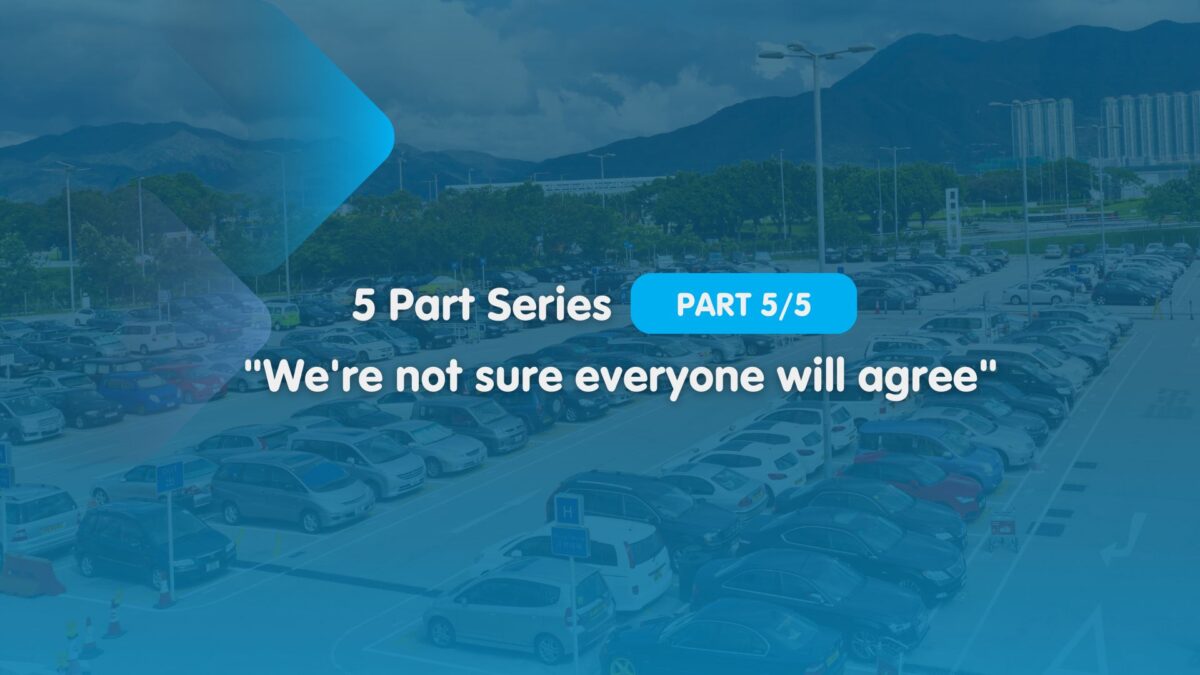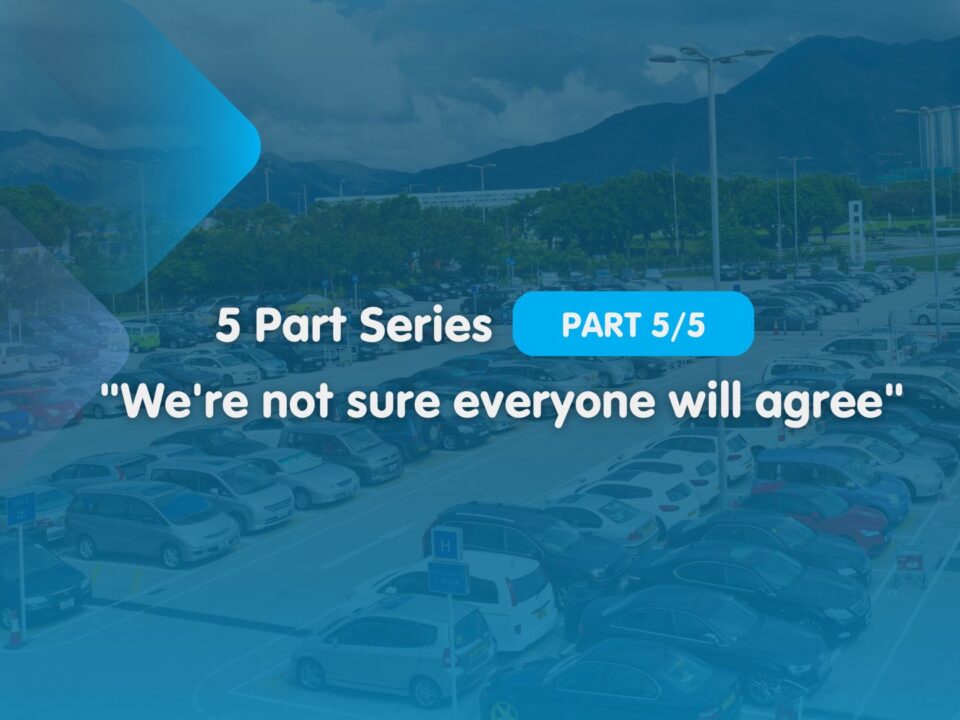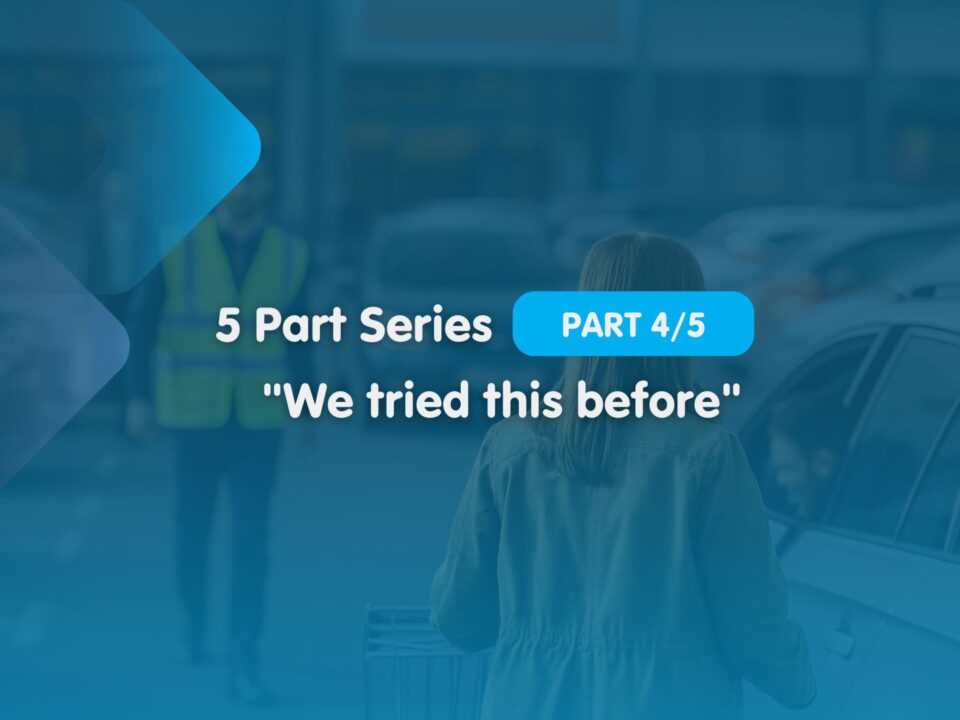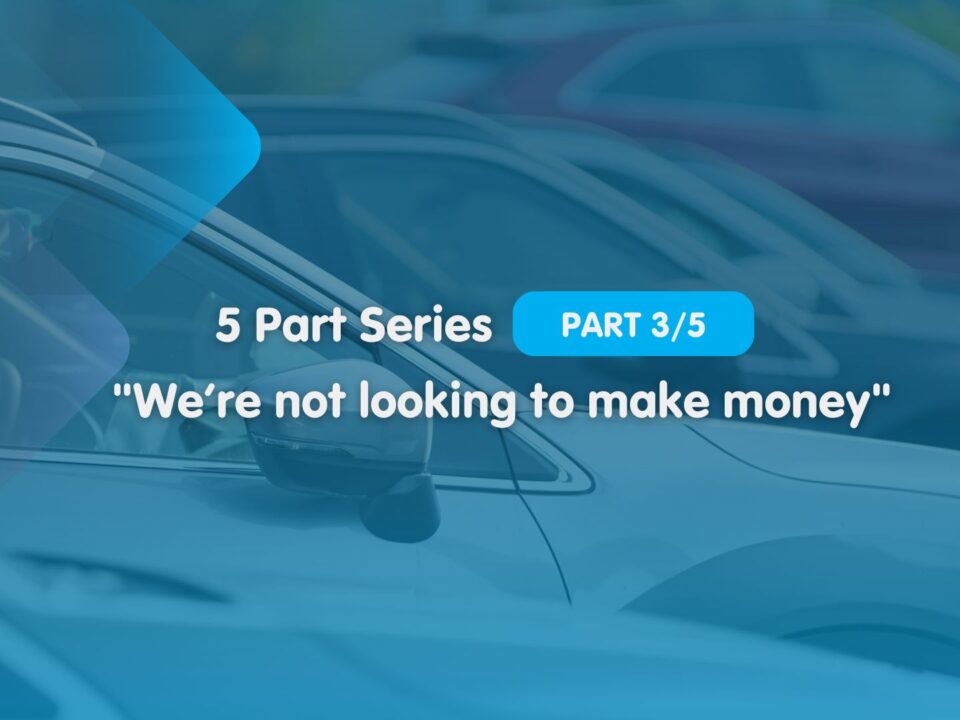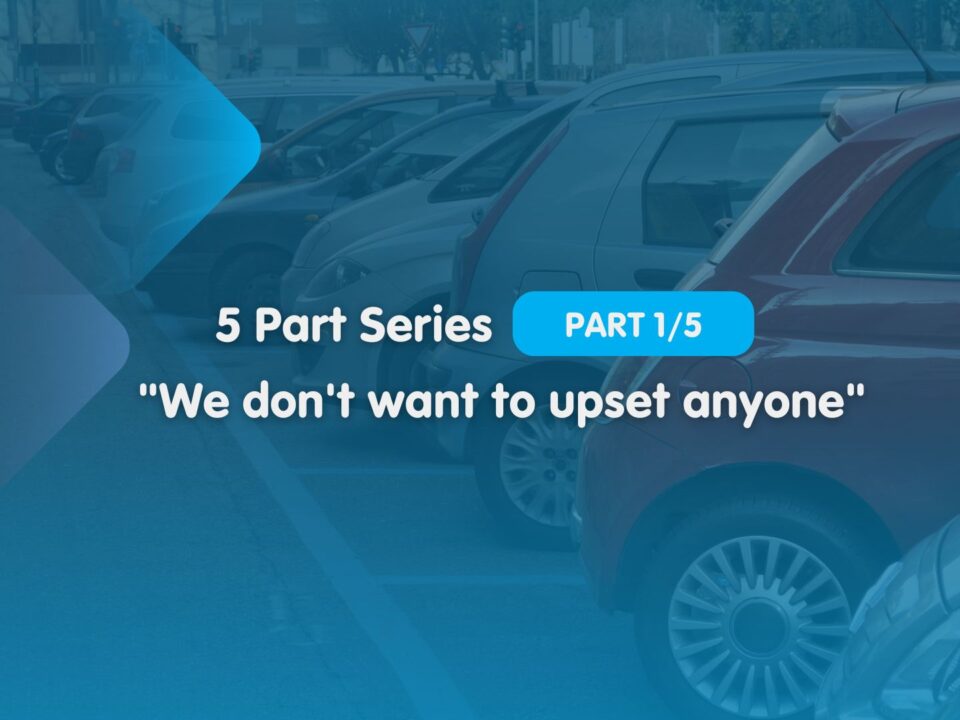Part 5. “We’re not sure everyone will agree”

Part 4. “We tried this before”
17/07/2025
What does ESG have to do with your car park?
05/08/2025"We’re not sure everyone will agree"
How to win over a committee without causing a storm
It’s easy to spot the signs, even before the words are spoken.
A careful glance around the conference table.
Someone clears their throat, leans back, waits to see who’ll go first.
There’s a proposal on the agenda — something to do with the car park.
But already, you can feel the tension in the air.
You’re not alone in this.
Every committee has its own weather — sometimes a breeze, sometimes a storm.
When it comes to parking, the pressure tends to build quickly.
Because everyone has an opinion, and almost no two are the same.
One person wants stricter rules — no exceptions, no grey areas.
Another wants the lightest possible touch — just a sign, perhaps, or a gentle word now and then.
Someone else is worried about costs, or reputational risk,
or the idea that bringing in any outside help will somehow change the spirit of the place.
There are those who have been through it before —
maybe they’ve got stories about harsh enforcement, letters landing on doormats,
complaints spiralling out of control.
They’re wary, not out of habit, but out of experience.
And there’s usually at least one person who isn’t sure there’s a problem at all.
“Maybe it’ll settle down.”
“Maybe we can handle it ourselves.”
So the conversation moves slowly.
Sometimes it stalls altogether.
Not for lack of caring — quite the opposite.
It’s because everyone cares, but in different ways.
You want to find a way through, but you’re conscious of the risks.
Push too hard, and the resistance grows.
Go too soft, and the problem stays unsolved.
So what does it take to win people over —
not with force, but with clarity, with calm, with a sense that everyone can breathe?
It starts, as these things often do, with listening.
Not just to the loudest voices,
but to the quieter concerns as well.
Sometimes, the strongest objections aren’t spoken outright —
they live in questions, in silences, in the way someone phrases their doubts.
It helps to acknowledge the fears for what they are —
not obstacles, but signals.
Signals that people have seen how these things can go wrong.
They want reassurance that this time, it’ll be different.
So you show your workings.
You make it clear you’re not proposing a one-size-fits-all regime.
You talk about choices —
about self-ticketing, or signage-only,
about the ability to set grace periods,
about systems that are as gentle or as robust as the committee wants.
You explain how the controls can fit the mood of the place,
how they can be as visible or invisible as needed.
You talk about the possibility of trials —
starting with something small, reviewing after a few weeks,
changing course if it doesn’t feel right.
It helps to bring real stories, not just data.
Maybe you share what’s worked in similar places,
not to sell a solution, but to show what’s possible.
You describe sites where the controls are so quiet,
most people barely notice them at all — except that there’s always space for the people who should be there.
If there’s worry about harshness,
you show how the process can be set up for fairness.
That there’s always a human on the other end.
That genuine mistakes are treated kindly.
That local discretion isn’t lost in the machinery.
It’s important to acknowledge that the solution might need to change —
that the committee can adjust, scale back, or try a different approach as the real world unfolds.

Sometimes, the best way forward is incremental.
A first step, not a final commitment.
A sign before a system.
A meeting to review after a month,
space for feedback,
room for stories — good and bad.
If there’s disagreement, it doesn’t mean failure.
It means the committee is doing its job —
weighing risk, listening to each other, caring for the site.
Your role isn’t to sweep all doubts away.
It’s to help the group move towards enough consensus to take a step.
Sometimes that’s all you need:
a willingness to try, to watch, to learn.
And if a storm does blow through —
if the first solution lands awkwardly,
or people raise objections once it’s live —
there’s a way back.
Systems can be tuned, grace periods lengthened, communication improved.
Most important of all, you remind everyone that the goal is not enforcement for its own sake.
It’s not about being strict or soft,
but about making the car park easier, calmer, fairer for the people who actually need it.
When the process is open,
when people feel heard,
when they see that their concerns can shape the outcome,
the resistance softens.
And sometimes —
sometimes, once the storm passes,
you discover that what remains is not disagreement,
but a kind of relief.
Because in the end, everyone wants the same thing:
A car park that just works,
so the committee can get back to all the other things that matter.
If the solution feels like something built together —
measured, flexible, fair —
then not only does everyone win,
but most days, no one even thinks about the car park at all.
Continue the Series
- 17/07/2025
Part 5. “We’re not sure everyone will agree”
What Holds People Back from Car Park Management? PT. 5/5: How to win over a committee for your car park.
Read more - 17/07/2025
Part 4. “We tried this before”
What Holds People Back from Car Park Management? PT. 4/5: Why your parking management went wrong: and what can be done differently .
Read more - 17/07/2025
Part 3. “We’re not looking to make money”
What Holds People Back from Car Park Management? PT. 3/5: What car park management controls look like when revenue isn’t the goal.
Read more - 17/07/2025
Part 2. “But It’s Our Land”
What Holds People Back from Car Park Management? PT. 2/5: Staying in control while getting the right kind of support.
Read more - 17/07/2025
Part 1. “We don’t want to upset anyone”
What Holds People Back from Car Park Management? PT. 1/5: Why sensible car park management controls don’t have to feel harsh.
Read more

